Data, Community, and Conservation: Lessons from Three Continents

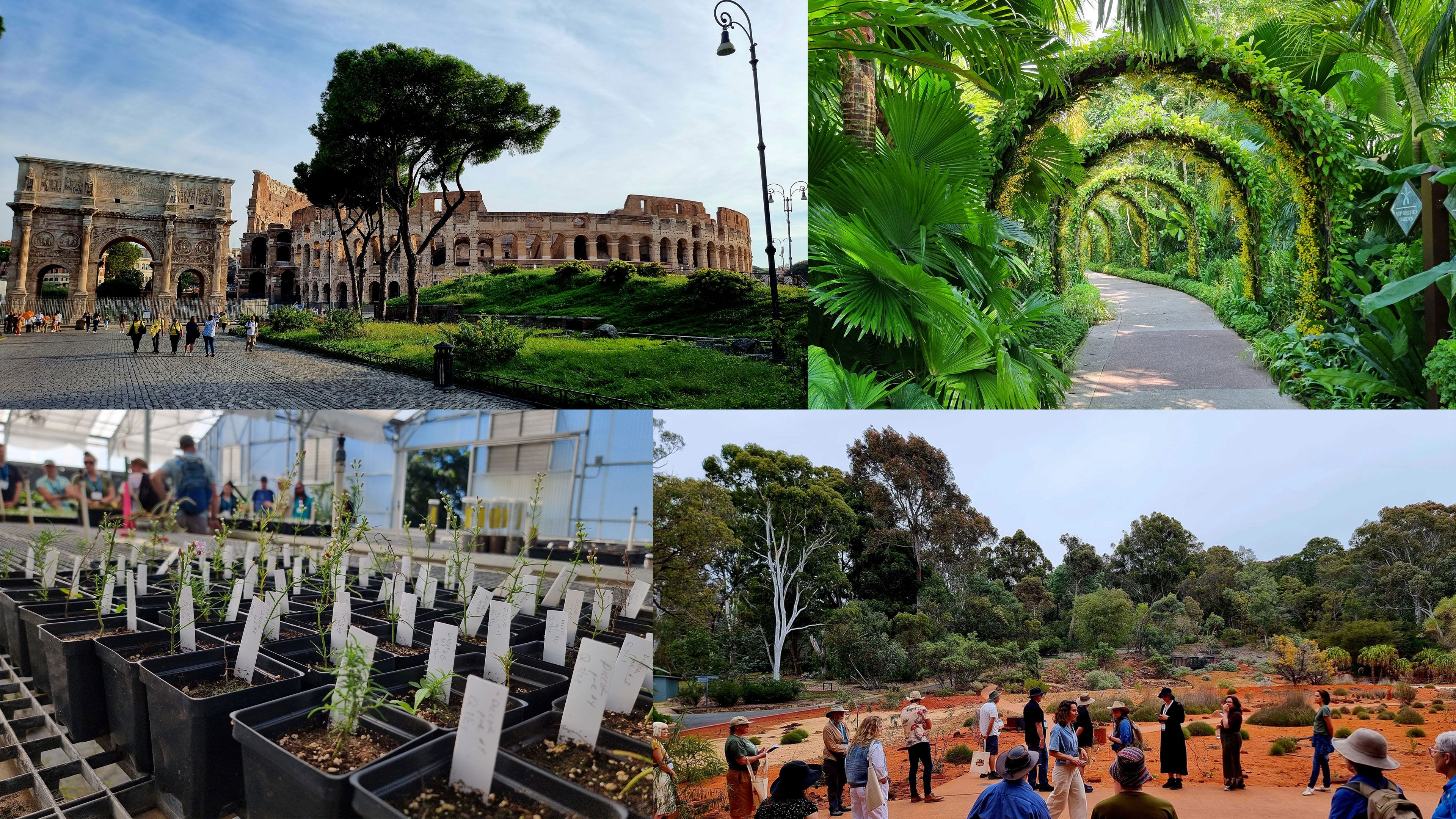
This autumn brought an extraordinary opportunity to traverse three continents in as many months, connecting with the vibrant, dedicated community that forms the heart of the global botanic garden network. From the historic gardens of Europe to the innovative zoo horticulture programmes of North America and the thriving botanic institutions of Australia and New Zealand, each journey revealed the remarkable collective knowledge and potential that exists when passionate professionals come together.
While each conference had its unique character and regional focus, a common thread united them all: a shared commitment to plant conservation, public engagement, and the careful stewardship of living collections. These gatherings reinforced a fundamental truth: that the strength of our community lies not just in our individual gardens, but in our willingness to share knowledge, celebrate successes, and learn from one another's experiences across borders and hemispheres.
EUROGARD X – Rome, Italy (September 2025)
The 10th European Botanic Gardens Congress in Rome brought together hundreds of professionals from across Europe and beyond, providing a platform for discussions on everything from climate adaptation to digital innovation in collection management. The setting itself, the historic city of Rome, served as a reminder of how deeply gardens and plant knowledge are woven into European cultural heritage.
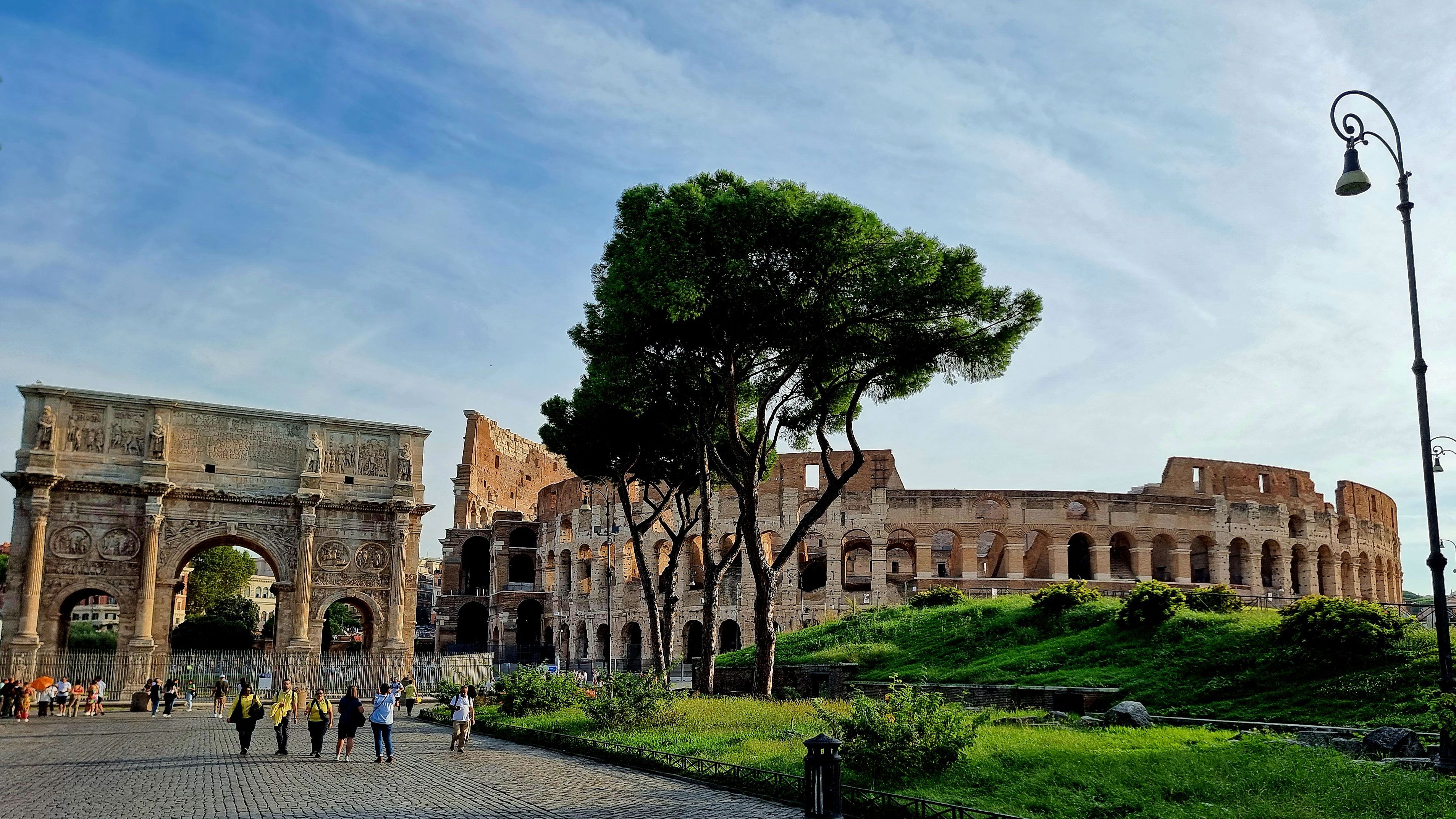
Data as Foundation
A clear theme emerged throughout the congress: the critical importance of reliable plant collection data. Multiple presentations underscored that without accurate taxonomy, proper identification, and documented provenance, any subsequent collection metrics or conservation efforts become fundamentally compromised. This isn't merely an administrative concern; it's the bedrock upon which meaningful conservation work is built.
Our presentation on Friday, "Bridging the Inventory Gap: Leveraging Technology to Improve Tracking of Living Collections in Botanic Gardens," was part of a session that powerfully illustrated this principle. Martin Smit and Edwin Pos from Utrecht University Botanic Garden presented "The Story that Seed and Plant Catalogues Tell About Our Global Living Plant Collections' History," revealing how historical records can illuminate patterns and gaps in our collective holdings. Following this, Arnau Ribera Tort from Royal Botanic Gardens, Kew, delivered "Linking Collection Objects at Royal Botanic Gardens, Kew: A Unified Approach for Occurrence-Based Management," demonstrating how systematic data integration transforms collection management.
We were also delighted to be joined by our co-presenters Susanna Rambelli and Angelica Casini Ropa from Bioparco di Roma, whose collaboration enriched our contribution to the congress. The synergy between these presentations reinforced that gardens worldwide are recognising data quality as essential infrastructure, not an optional enhancement.
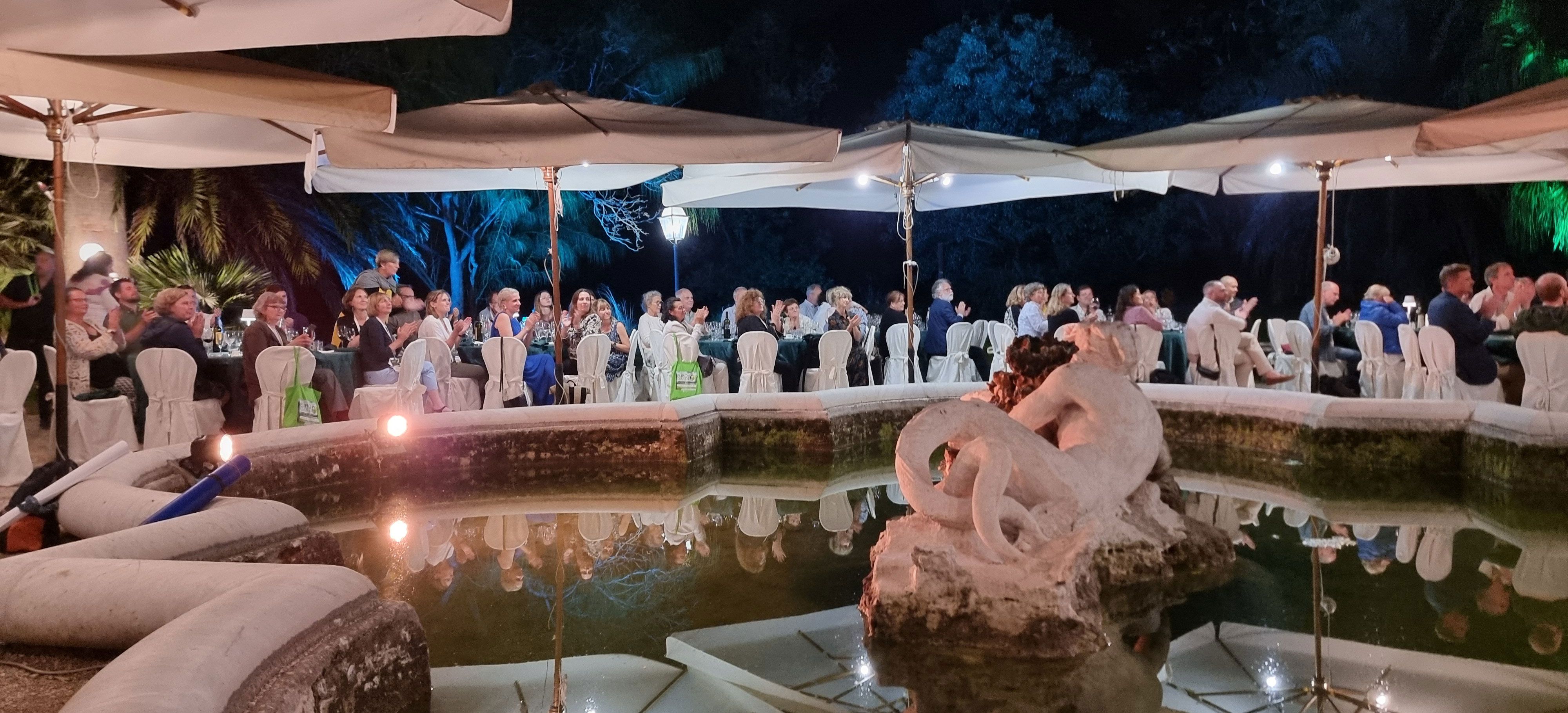
A huge thanks to the host garden, The Botanic Garden of Rome, BGCI, The Secretariat of the European Botanic Gardens Consortium, and the contributions from the Scientific and Advisory Committee for putting together yet another memorable and inspiring congress.
AZH Annual Conference – Tampa, Florida (October 2025)
The Association of Zoological Horticulture Conference in Tampa offered a refreshing perspective on how horticultural excellence enhances zoological settings. From October 16-20, the energy and enthusiasm of zoo horticulturists created an atmosphere of genuine camaraderie and shared purpose.

The Power of Specialised Networks
What makes AZH special is the specificity of its focus and the warmth of its community. Zoo horticulture presents unique challenges, creating naturalistic habitats, ensuring plant safety for animals, managing high visitor traffic, and the expertise gathered at this conference reflects years of practical problem-solving and creative innovation.
The field trips were exceptional showcases of this expertise. Zoo Tampa at Lowry Park demonstrated how horticultural design can create immersive animal habitats that educate and inspire visitors. The Florida Aquarium revealed the specialised world of aquatic and coastal plantings. Bok Tower Gardens, a National Historic Landmark, offered breathtaking views of landscape design at its most artistic, with the iconic Singing Tower rising above meticulously maintained gardens.
Beyond the formal programme, the informal exchanges, conversations over meals, discussions during garden tours, and connections made in hallways, reinforced why professional networks like AZH are invaluable. If you're not yet part of this community, you're missing out on one of the most energetic, friendly, and knowledgeable networks of zoo horticulturists anywhere.

Conservation Impact Through Small Grants
It is also a great honour to serve on the AZH Conservation Committee, which undertakes the important work of reviewing conservation grant applications. This year, the committee awarded a total of $34,000 in grant funds to be shared among six worthy recipients, with the majority of funding contributed by the Disney Conservation Fund 🙏. All grant recipients will be announced on the AZH website soon, and their projects represent the practical, on-the-ground conservation work that makes a tangible difference for both plants and the communities that depend on them.
Recent research from IUCN demonstrates that modest, targeted investments can trigger significant conservation impact, particularly when they support local leadership and community-centered approaches. This reinforces the value of programmes like AZH's conservation grants, which recognise that effective conservation often starts with small-scale projects that address specific local needs.
Wishing all our American friends a wonderful Thanksgiving, and warm gratitude to Joe Williams, Danielle Green, Christy Powell, and the rest of the AZH board for their dedication to advancing zoo horticulture and biodiversity conservation.
BGANZ Congress – Canberra, Australia (November 2025)
The Botanic Gardens Australia and New Zealand Congress in Canberra, held on Ngunnawal Country, represented a significant milestone not just for the regional botanic garden community, but for us personally. Four years ago, Hortis was selected as the preferred plant records system by the BGANZ Collections and Records Management Group Project. This decision has since enabled nearly 30% of gardens in the region to transform their collection management practices.

Celebrating Progress and People
The congress was highlighted with a moment of celebration: Shoalhaven Heads Native Botanic Garden, along with Rob Stewart and his team of dedicated volunteers, received the prestigious BGANZ Living Collections Curation Award. Their journey exemplifies what's possible when passion meets the right tools, just two years after joining the Hortis community, they've transformed from paper-based records to a sophisticated, digitally managed collection. To learn more about their journey, you can view this recording from a recent webinar.
It was particularly meaningful to reconnect with Tex Moon and John Arnott, key members of the original BGANZ project team, and to reflect on how far the community has come in four years. The partnership continues to grow, with more gardens recognising that reliable digital collection management isn't a luxury but a necessity for modern botanic garden operations.
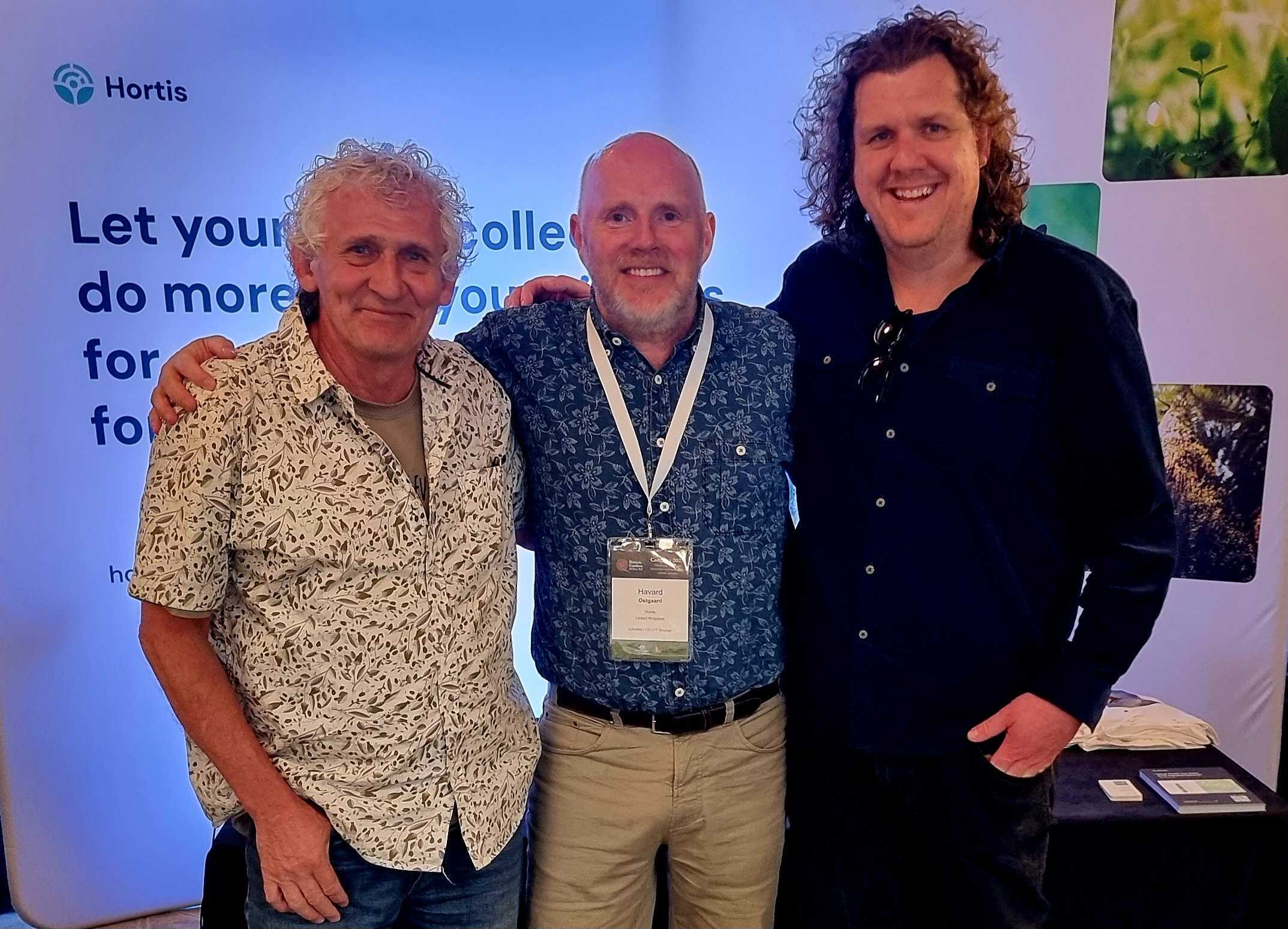
The congress also honoured John Arnott's induction into the BGANZ Honour Roll, a richly deserved recognition of his decades of contribution to the botanic garden community. Such moments remind us that behind every successful project and innovation are individuals who dedicate their careers to advancing our collective mission.
Heartfelt thanks to Cass Nichols and the BGANZ board, along with the host gardens, the Australian National Botanic Gardens and the National Arboretum Canberra, for organising a congress that balanced professional development with genuine celebration of community and progress.
Unexpected Bonus Visits
On our travels between conferences, we also took the opportunity to visit other gardens in the region. Two gardens stood out as reminders of what botanic gardens can achieve when vision, resources, and expertise align.
Naples Botanical Garden in Florida presented a stunning integration of cultivated tropical landscapes with preserved natural lands. The garden serves as a living laboratory for conservation storytelling, demonstrating how gardens can communicate complex biodiversity concepts through immersive, beautiful design. The seamless blending of horticultural artistry with ecological preservation offers a model for how gardens can honour both cultivated and wild plant communities. A big thanks to Chad Washburn, Lina Ramirez, Sandra Rigotti-Santos, Nick Ewy and Estgher Chiddister for making a magical visit even more memorable.
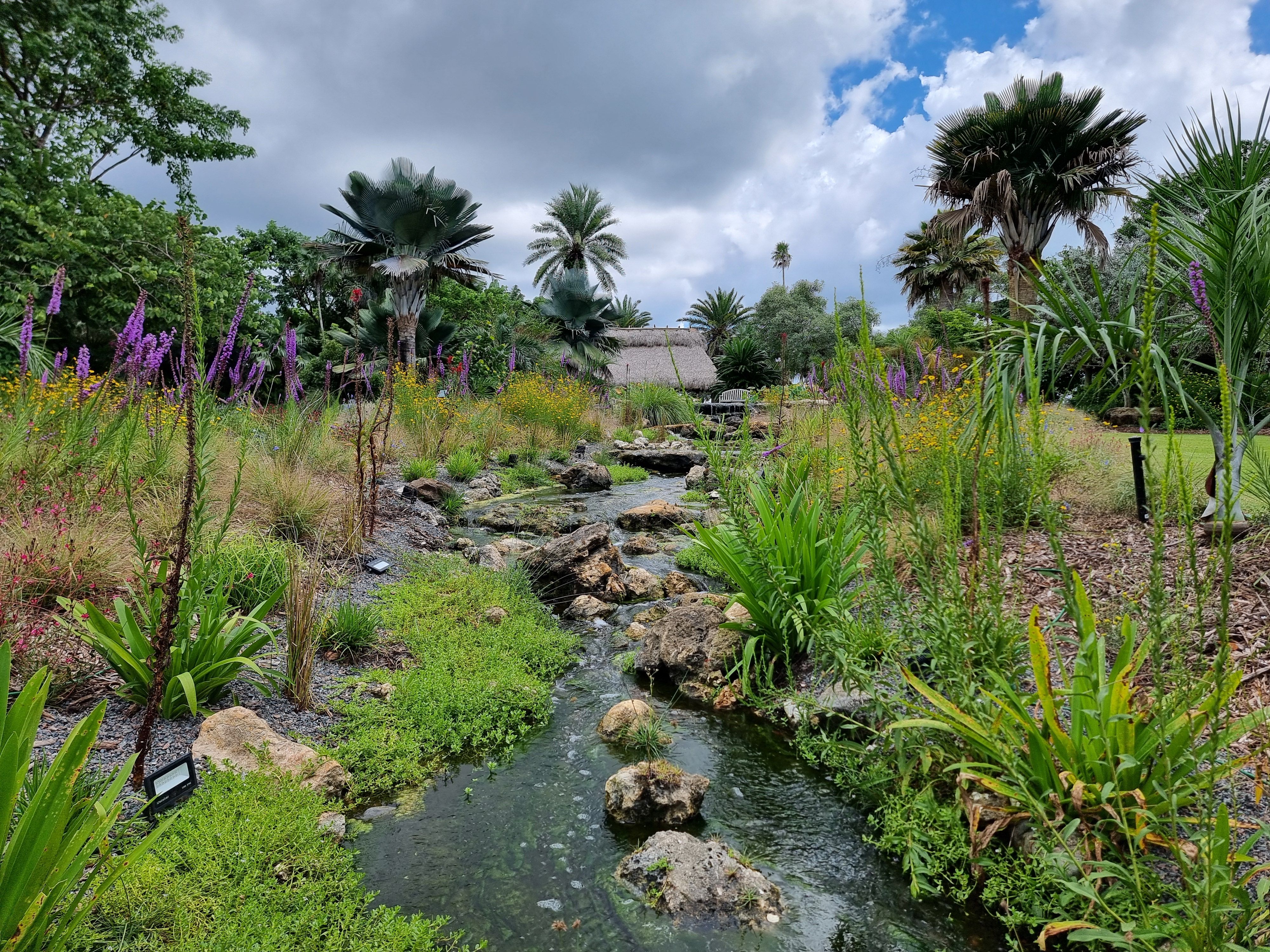
Beyond its role as a public garden, Naples Botanical Garden also hosts the secretariat for the Caribbean and Central American Botanic Gardens Network, coordinated by Lina Ramirez. This network represents a vital connection point for botanic gardens working in one of the world's most biodiverse yet threatened regions. We are excited and privileged to support a growing number of members from this network as they strengthen their collection management and conservation capacity.
Singapore Botanic Gardens, a UNESCO World Heritage Site, continues to evolve and inspire even 36 years after my first visit. The unrivalled National Orchid Garden and thoughtfully curated ethnobotanical section demonstrate how interpretation, both analogue and digital, can enhance visitor understanding without overwhelming the plant experience. The unexpected wildlife residents, from free-roaming chickens and monitor lizards to the recently arrived otters, add an element of spontaneous wonder that no designed feature could replicate. Thanks to Nura Abdul Karim, Thereis Choo, and their colleagues for stewarding this magical place with such evident care and innovation.
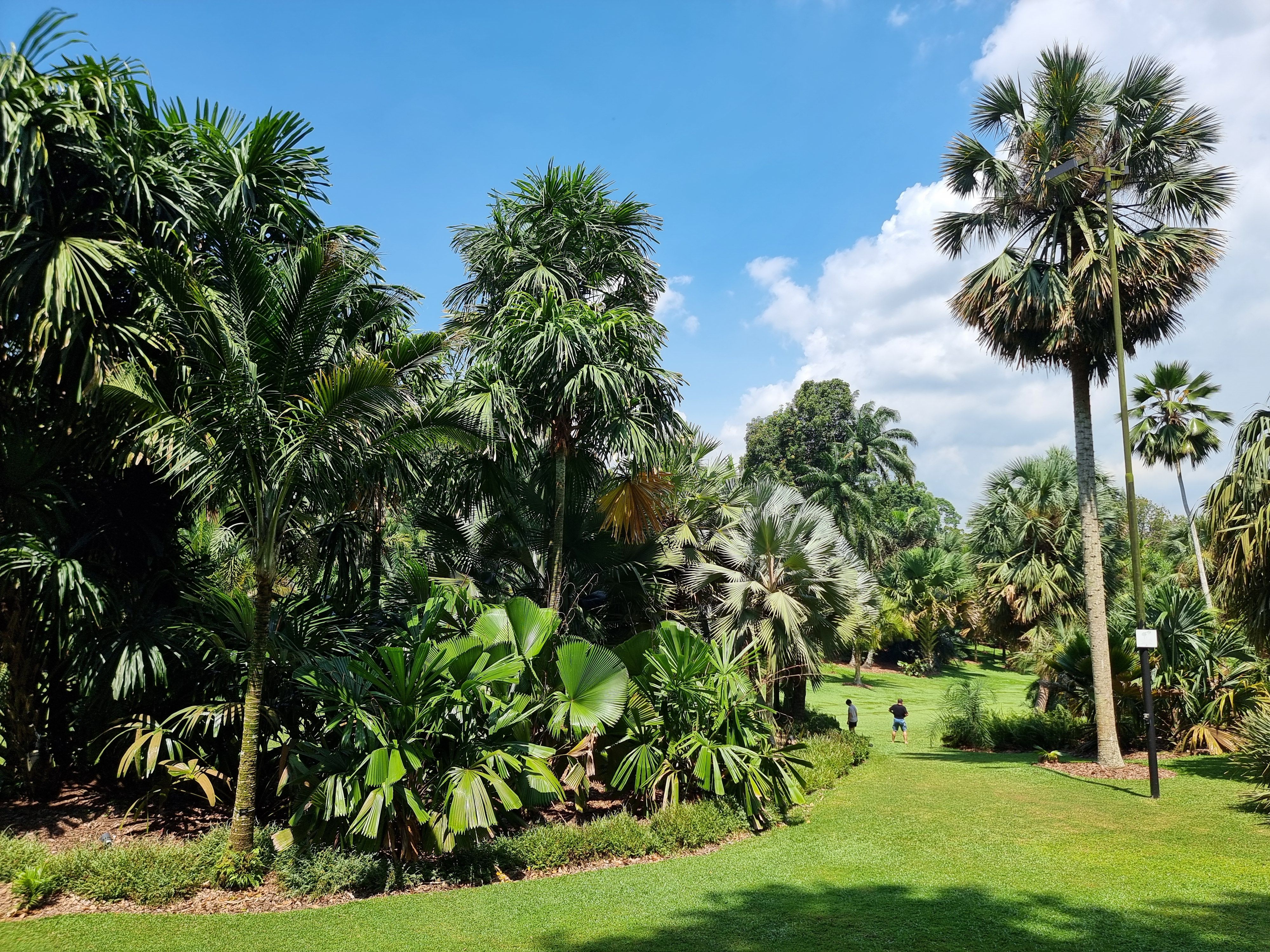
Conclusion: The Essential Foundation
Across three conferences and three continents, one message resonated with consistent clarity: reliable plant collection data on taxonomy, inventory gaps, identification, and provenance must be in place before any other collection metrics can have meaning. This isn't simply about administrative efficiency; it's about ensuring that every plant in our care is properly documented, its story preserved, and its conservation value recognised.
The global botanic garden community possesses extraordinary collective knowledge and potential. When we come together, whether in Rome, Tampa, Canberra, or anywhere gardens gather, we strengthen not just our professional networks but our shared capacity to address the urgent conservation challenges facing plant diversity worldwide. Here's to continued collaboration, innovation, and the people who make living collections thrive.